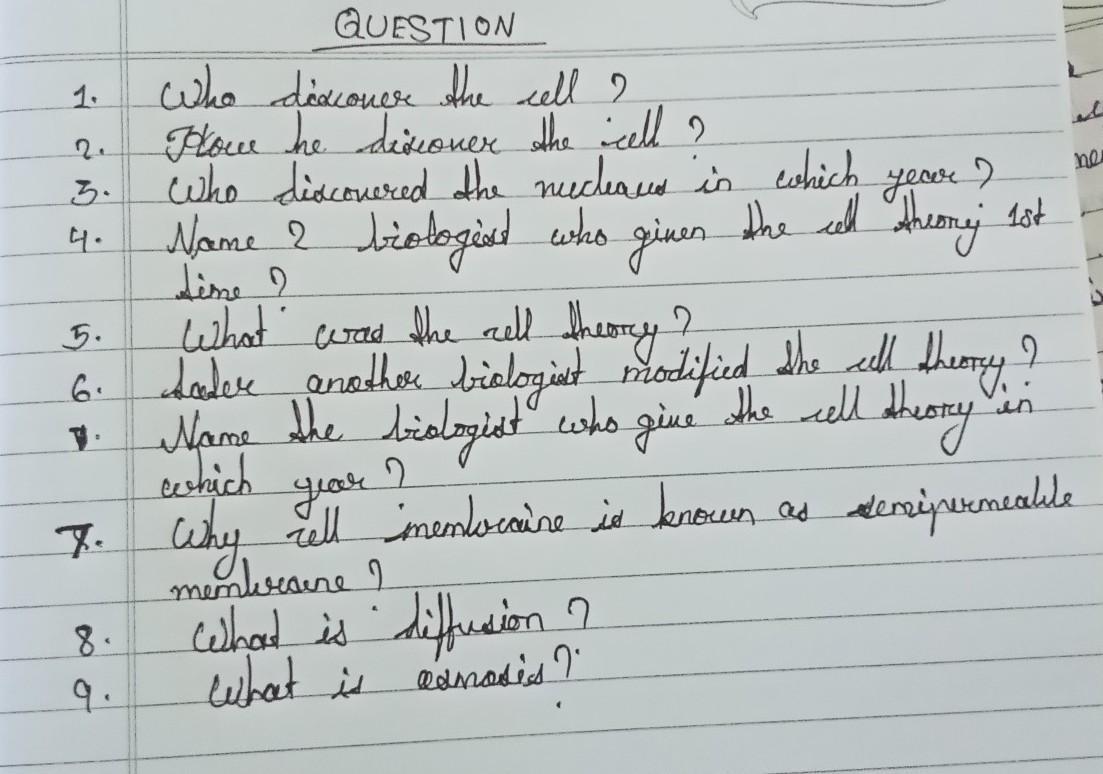Answer:
yeah I will help you cuz i'am also from class 9th sis!!❣️
Explanation:
1:
The cell was first discovered and named by the scientist Robert Hooke in 1665. 1. He was an English philosopher, polymath, and architect.
2:
The invention of the microscope led to the discovery of the cell by Hooke. While looking at cork, Hooke observed box-shaped structures, which he called “cells” as they reminded him of the cells, or rooms, in monasteries. This discovery led to the development of the classical cell theory.
3:
May, 1911: Rutherford and the Discovery of the Atomic Nucleus.
4:
The first man to make a significant contribution in biology is Alcmaeon, living in Crotona in the 5th century. Crotona is famous at the time for its Pythagorean scholars, but Alcmaeon seems not to have been of their school.
5:
It was not until 1838 that the botanist Matthias Jakob Schleiden, interested in plant anatomy, stated that “the lower plants all consist of one cell, while the higher ones are composed of (many) individual cells.” When the physiologist Theodor Schwann, Schleiden's friend, extended the cellular theory to include animals.
6:
Rudolf virchow modified the hypothesis of cell theory given by Schleiden and Schwann.
7:
The classical cell theory was proposed by Theodor Schwann in 1839. There are three parts to this theory. The first part states that all organisms are made of cells.
8:
Yes, the plasma membrane and cell membrane are the same. Both refer to the biological membrane which separates the interior of the cell from the cell's extracellular space.
9:
Diffusion is the movement of a substance from an area of high concentration to an area of lower concentration . Diffusion occurs in liquids and gases when their particles collide randomly and spread out. Diffusion is an important process for living things - it is how substances move in and out of cells.
10:
In biology, osmosis is the movement of water molecules from a solution with a high concentration of water molecules to a solution with a lower concentration of water molecules, through a cell's partially permeable membrane.
sorry,sis if some of my answers are incorrect actually your questions are not visible properly but hope it's correct ❣️!!:-)^_^

